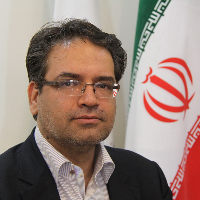Assessment and comparison of two policies: pedestrianization and walkability in CBDs (Case Study: Hamedan CBD)
Abstract:
Nowadays physical expansion of cities has led to citizens` dependency on private and public vehicles for moving in cities to meet their needs, which is more obvious in larger cities. This issue of major urban areas being seen as specializing in providing goods and services has resulted in land use segregation (zoning) and inevitable of use of automobiles. In addition to causing ecological problems, increasing urban management expenditure and fossil fuel consumption, such a process has a negative effect on citizens` quality of life. With the dominance of vehicles over cities, pedestrian movements will gradually wane which in turn will trigger the physical and social deterioration in urban fabrics. In the last three decades, severe reactions have been shown toward use of automobiles and decline in walking as the result of increasing city problems like pollution, transportation difficulties, road insecurity, deterioration of historic centers, decreasing city space and service accessibility quality, disable people’s mobility problems, emotional pressures, and decrease in visual values. Increasing environmental quality and regenerating historic-cultural characteristics of CBDs are of major concern to urban centers managers and decreasing vehicle use and giving back urban spaces to pedestrians are also of considerable interest. However, different physical, economic, social and other factors lead to a high dependency on automobiles which makes it hard to change the situation. Hence, in pedestrianization it is important to consider each city’s circumstances individually and balance maintained between the shifting of pedestrians and drivers. Amongst modern movements in city transportation which emphasize value of pedestrians and the lowering of automobile supremacy is pedestrianization and pedestrian street construction. This survey has decided to select an appropriate policy for decreasing automobile movement in Hamedan CBD. Hamedan’s central fabric is still operating as a service pole for all citizens despite city growth and suffering from heavy traffic and and socio-economic trades especially because of its radiant and monocentric structure. This survey was carried out using analytic-descriptive method, common library studies and field observation. The main criteria for pedestrian oriented environmental designs and pedestrian street construction were derived from Persian and foreign literature review. After that, these indicators were evaluated in Hamedan CBD. To compare the two policies, (pedestrianization and walkability) AHP (analytical hierarchy process) was used and to weigh the criteria and sub criteria, Delphi method (30 experts opinions were considered upon the topic) was employed. Results show that the most effective criteria in evaluating pedestrianization capacity of an area are, in order, orderly as follows: transportation network structure, traffic and social conditions, land use and activity, physical structure, natural environment, economic considerations and landscape. Analyzing these criteria in Hamedan CBD proves supremacy of pedestrianization over pedestrian street construction. This survey shows that because of the negative effects on the natural environment, economic conditions and physical structure of the city, it is impossible to eliminate automobiles from Hamedan CBD completely.. Hence pedestrianization is feasible by means of lowering dependency on private automobiles as well as transferring traffic to bypasses in the city periphery which can maintain balance between pedestrians and drivers and public opinion gained. Therefore, it is recommended to keep vehicle accessibility to CBD and Imam Square (main historic square with various activities, buildings and major roads surrounding it) while converting the square itself into a walkable place which will disconnect radial streets in the central fabric of the city and shift traffic to peripheral roads.
Keywords:
Language:
Persian
Published:
Motaleate Shahri, Volume:4 Issue: 13, 2015
Pages:
17 to 32
magiran.com/p1494506
دانلود و مطالعه متن این مقاله با یکی از روشهای زیر امکان پذیر است:
اشتراک شخصی
با عضویت و پرداخت آنلاین حق اشتراک یکساله به مبلغ 1,390,000ريال میتوانید 70 عنوان مطلب دانلود کنید!
اشتراک سازمانی
به کتابخانه دانشگاه یا محل کار خود پیشنهاد کنید تا اشتراک سازمانی این پایگاه را برای دسترسی نامحدود همه کاربران به متن مطالب تهیه نمایند!
توجه!
- حق عضویت دریافتی صرف حمایت از نشریات عضو و نگهداری، تکمیل و توسعه مگیران میشود.
- پرداخت حق اشتراک و دانلود مقالات اجازه بازنشر آن در سایر رسانههای چاپی و دیجیتال را به کاربر نمیدهد.
In order to view content subscription is required
Personal subscription
Subscribe magiran.com for 70 € euros via PayPal and download 70 articles during a year.
Organization subscription
Please contact us to subscribe your university or library for unlimited access!


